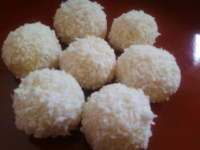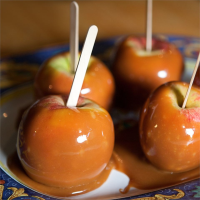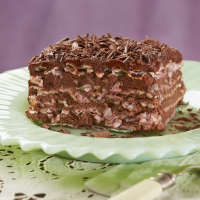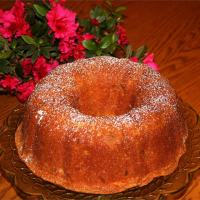SWEET MOCHI WITH RED BEAN FILLING RECIPE - NYT COOKING

Nothing compares to the texture of fresh mochi, the sweet, delightfully chewy Japanese rice dough. And when you make it yourself (which takes about 10 minutes), you can really enjoy it fresh, at the peak of its textural pleasures. Chop up the cooled mochi and toss it in roasted soybean flour, and it's ready to go as a sweet snack or ice cream topping. Or, as in this recipe, put in some extra time and wrap the sticky dough around a simple red bean filling to make daifuku. The pastry chef Tomoko Kato uses shiratamako flour processed in Japan, but mochiko flour can be easier to find, and the results are similar.
Provided by Tejal Rao
Total Time 3 hours
Yield 20 pieces
Number Of Ingredients 6
Steps:
- Make the filling: Rinse the beans and transfer to a large pot. Cover the beans with water and bring to a boil; drain. Cover the beans again with water and this time simmer until they are completely tender, about an hour to an hour and a half, adding more water if necessary to keep the beans submerged. Drain.
- Purée the drained beans in a food processor or blender to make a smooth paste. If the beans are too dry to catch the blades, add a few tablespoons of water. Return the bean purée to the same pot and stir in the sugar and salt. Cook over medium-low heat, stirring occasionally, until most of the water has evaporated and the purée is very thick, 10 to 15 minutes. Spread bean paste in a wide, shallow container and refrigerate until firm and cool.
- Meanwhile, make the mochi dough: Line a sheet pan with a piece of parchment paper and spread a generous heap of potato starch in a large circle; set aside. In a bowl, whisk together the mochiko flour and 1 1/3 cup/300 milliliters water until smooth. Pour mixture through a mesh strainer into a saucepan, using the whisk to help push it through if necessary. Add the sugar and mix well. Switch to a heatproof spatula and cook the mixture over medium heat, stirring constantly, until it thickens and comes together as one big, smooth, shiny mass that can hold its shape, 5 to 7 minutes.
- Using a starch-dusted knife, cut the dough into 20 even pieces. (If eating plain, or as an ice cream topping, cut into 40 to 50 smaller pieces.) One at a time, use a rolling pin to roll a piece of mochi dough into a thick, flat disk about 2 inches by 2 inches. Use potato starch liberally to keep the dough from sticking to your work surface, the rolling pin or your fingers. Roll a scant tablespoon of bean paste between your hands to form a ball and place it in the center of the rolled-out dough piece. Use your fingers to evenly stretch the mochi dough up and around the filling without squishing it, pinching the dough shut at the top to seal it, and then gently rolling the mochi between your hands to form a rounded shape. Set on the parchment-lined baking sheet with the seam on the bottom. Eat the filled mochi the day they’re made, or cover and store in the refrigerator for 1 day.
Nutrition Facts : @context http//schema.org, Calories 88, UnsaturatedFatContent 0 grams, CarbohydrateContent 21 grams, FatContent 0 grams, FiberContent 0 grams, ProteinContent 1 gram, SaturatedFatContent 0 grams, SodiumContent 30 milligrams, SugarContent 15 grams
SWEET BLACK BEANS RECIPE | EPICURIOUS
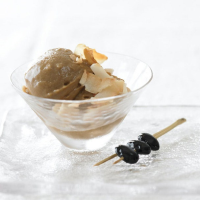
Many of the items served to celebrate New Year's in Japan have symbolic meaning, expressed as wordplay. Sweet black beans are a good example: the word _kuro_ means "black," but the meaning shifts to "hard work" when the calligraphy changes and the final vowel is extended. Similarly, the word _mamé_ means "bean," but written with different caligraphy, _mamé_ becomes "sincere" or "earnest." Eating black beans in syrup on New Year's ensure that those who work in earnest will have a sweet new year. The traditional method of preparing _kuro mamé_ is a long (3 days from start to finish) and rather tedious procedure, though one that results in utterly delicious plump, glossy, tender beans in a light sugar syrup that can be kept for months. Over the years, observing many Japanese home and professional cooks and experimenting in my own kitchen, I have developed a modified version of the classic technique that I am sharing here. The key to preparing luscious, wrinkle-free sweet black soybeans is patience: the beans must be completely tender before sweetening them (adding the sugar too early will cause the beans to sieze and toughen), and the pot must be frequently watched, adding more water as needed to keep the beans barely submerged through the lengthy cooking process so they don't wrinkle.
Provided by Elizabeth Andoh
Yield Makes 3 to 3 1/2 cups
Number Of Ingredients 6
Steps:
- Rinse the dried beans. In a deep bowl, mix the 3 cups water and baking soda, stirring to dissolve the baking soda. Add the beans and let them soak, completely submerged, at room temperature for at least 8 hours or preferably 10 to 12 hours (if it is very warm in your kitchen, soak the beans in the refrigerator for 24 hours). As the beans soak, they will swell to several times their original size. To make sure they remain moist throughout the soaking, dampen sarashi or several layers of finely woven gauze or cheesecloth and place directly on the soaking beans.
- Transfer the swollen beans and what remains of their soaking water to a deep 3-quart pot. If the beans are no longer covered with water, add water as needed to cover them. Place over medium-high heat and bring to a boil. Skim away any aku (froth, scum, or film) with a fine-mesh skimmer and add water as needed to cover the beans by about 1 inch. Adjust the heat to maintain a steady, not-too-vigorous simmer. Place the cloth you used when soaking the beans on top of the simmering beans. The cloth will become discolored, but if it is sarashi or other sturdy muslinlike cloth, it can be reused for the same purpose several times. If you have an otoshi-buta or other flat lid slightly smaller in diameter than the rim of the pot, place it on top of the cloth.
- Cook the beans for 2 hours, checking the intensity of the heat and the water level every 15 to 20 minutes. Ideally, the beans will gently simmer in water that barely covers them. Throughout, keep the surface of the beans moist with the cloth (and otoshi-buta).
- As the beans cook, some skins may loosen and a few beans may split, but neither is a good indication of tenderness. To check for tenderness, take a bean from the pot, and when cool enough to handle comfortably, hold it between your thumb and pinkie and press gently. It should yield easily. (This pinch test is accurate because the pinkie is usually a "weak" finger and can exert less pressure in the pinch. If a simmered bean can yield to this weaker pressure, you can be sure it is tender.) Cooking times will vary tremendously with the age and variety of the soybean. On some occasions, I have had to cook beans for 4 or more hours. Continue to cook the beans, checking the water level frequently and adding water as needed to keep the beans barely covered, until they are completely tender. At this point, the beans and their cooking liquid can be immediately transferred to a glass jar, covered with the cloth, then with a tight-fitting lid, and refrigerated for up to 3 days. (Before closing the jar, make sure none of the beans is exposed to air.)
- Make the syrup: Combine the sugar and 1 1/2 cups water in a deep, heavy 2-quart saucepan over medium heat, stirring to dissolve the sugar. Reduce the heat slightly and continue to cook, stirring occasionally, until the liquid is syrupy and reduced to about 1 cup. This should take about 10 minutes. During this reduction process the bubbles will become quite frothy.
- When ready to combine the syrup and beans, remove the otoshi-buta and cloth from the beans in the saucepan or open the jar and peel back the cloth and transfer to a heavy pot. Add the syrup, replace the cloth, and bring to a simmer over medium heat. Simmer for 10 minutes, or until the beans are barely covered with the syrup.
- Remove from the heat and allow the beans to cool to room temperature in the syrup. During the cooling process, the sweetness of the syrup penetrates to the core of the beans. Make sure the beans are covered with the cloth as they cool to avoid excessive wrinkling of their skins.
- Peel back the cloth, add the soy sauce to the cooled syrup (it will mellow the intense sweetness), and stir to distribute well. Replace the cloth and place the pot over low heat. Bring the syrup slowly to a boil and cook for 2 minutes, then remove the pot from the heat. Allow the cloth-covered beans and syrup to cool to room temperature again. It is in this final cooling process that the flavors develop and meld.
- Set the beans aside to cool completely, then transfer them with their syrup to a clean glass jar. Seal with a tight-fitting lid and refrigerate for up to 10 days. If you wish to store the beans for an extended time, use heatproof canning jars and process in a boiling-water bath as you would a jam or jelly, then store the cooled jars in the refrigerator for up to 2 months.
JAPANESE SWEET AZUKI BEANS RECIPE BY FELICE - COOKPAD
From cookpad.com
See details
KUROMAME (SWEET JAPANESE BLACK BEANS) | HAWAIIAN ELECTRIC
From hawaiianelectric.com
See details
10 BEST SWEET AZUKI BEAN RECIPES | YUMMLY
From yummly.com
See details
SWEET RED BEAN PASTE (ANKO) - RECIPETIN JAPAN
From japan.recipetineats.com
See details
ANKO (SWEET RED BEAN PASTE) RECIPE – JAPANESE COOKING 101
From japanesecooking101.com
See details
KUROMAME (SWEET BLACK SOYBEANS) ?? • JUST ONE COOKBOOK
Dec 29, 2019 · Reduce heat to low and simmer (make sure the beans are not bouncing around) for 4 hours or until the beans are tender. Check inside the pot a few times to make sure there is enough cooking liquid. If not enough, add about 1 cup water.
From justonecookbook.com
From justonecookbook.com
See details
DAIFUKU MOCHI - JAPANESE SWEET BEAN RICE CAKES [5 MINUTE ...
From m.youtube.com
See details
10 BEST SWEET AZUKI BEAN RECIPES | YUMMLY
52,655 suggested recipes. Sweet Azuki Bean Soup With Mochi Food.com. glutinous rice flour, vanilla extract, sugar, salt, granulated sugar and 3 more. Sweet Red Bean Paste (Anko) – ?? Pickled Plum. kosher salt, azuki beans, water, granulated sugar. Tea-Brined T-Bone Pork Chop with Creamed Field Peas and Turnip Greens Pork Foodservice.
From yummly.com
From yummly.com
See details
MANJU (JAPANESE STEAMED CAKE WITH RED BEANS) RECIPE
May 19, 2021 · Manju is one variety of the myriad Japanese sweets, or wagashi, available for enjoyment.Manju is a round steamed cake which is typically filled with a sweet red bean filling.It differs from the otherwise popular mochi, or rice cake, which at times also is filled with a sweet red bean filling, in that the manju is made of wheat, rice, or another type of flour and has a cake-like consistency ...
From thespruceeats.com
From thespruceeats.com
See details
JAPANESE SWEET AZUKI BEANS RECIPE BY FELICE - COOKPAD
Great recipe for Japanese Sweet Azuki Beans. A traditional Japanese sweet that can be used in many ways! Making it at home is surprisingly simple, and more texture, flavor and not to mention much less sugar than the store-bought kind. Try as a topping for rice dumplings (dango) or ice cream, turn...
From cookpad.com
From cookpad.com
See details
HOW TO MAKE ANKO (SWEET BEAN PASTE) ????? | EASY JAPANESE ...
From m.youtube.com
See details
ANKO RECIPE - JAPANESE SWEET RED BEAN PASTE | WANDERCOOKS
Jan 18, 2021 · Anko is Japanese style sweet red bean paste made by boiling small red beans called azuki or adzuki beans and sweetened with sugar. There are two distinct style of Anko in Japan: Tsubuan – This style uses the whole azuki bean, giving it a a coarse texture.
From wandercooks.com
From wandercooks.com
See details
SEKIHAN (JAPANESE SWEET RICE WITH AZUKI BEANS) — THE 350 ...
Jun 23, 2016 · 1. Place the azuki beans into a 2 c. pyrex cup. Fill the cup with water to the 2 c. mark, then soak the dried azuki beans overnight. 2. The next day, dump the water, then put the azuki beans in a small sauce pan. Fill the pot 3/4 to the top with fresh water. Gently simmer the beans over low heat for 30-45 minutes until the beans are cooked.
From the350degreeoven.com
From the350degreeoven.com
See details
BEANS – JAPANESE COOKING 101
Kuromame Recipe. Kuromame are Japanese black beans cooked in sweet syrup. It is a part of Osechi Ryori, the traditional Japanese new year feast. There are…. Continue Reading ?. In Beans / Side Dish / Video.
From japanesecooking101.com
From japanesecooking101.com
See details
KINTOKIMAME RECIPE – JAPANESE COOKING 101
Apr 15, 2020 · Kintokimame are red kidney beans in sweet syrup. It is a small side dish that is often in the corner of a bento box. Because of its very sweet flavor, Kintokimame is not exactly a dish that goes well with Steamed Rice directly, which almost always comes with Japanese meals; however, it is a great pallet cleanser between rice and salty dishes.
From japanesecooking101.com
From japanesecooking101.com
See details
15 EASY JAPANESE RECIPES KIDS WILL LOVE
Jul 22, 2021 · Tamagoyaki (Pan Fried Rolled Egg) Tamagoyaki is a Japanese omelet made by rolling together thin layers of seasoned egg in a frying pan. It might take some mastery—it cooks up a little bit like a crepe but without the flipping. Get the recipe from Japanese Cooking 101 by clicking here. photo: Kindly Coconut.
From tinybeans.com
From tinybeans.com
See details
MONAKA, JAPANESE SWEET TREAT - BISCUIT PEOPLE
Apr 03, 2020 · In Chinese, Korean and Japanese cuisine, this paste is used. Azuki beans are consumed worldwide in several places. In Japan, China, Korea, and Vietnam, azuki beans are especially used in sweet food, snacks, and plates. Ideas for azuki bean sweets . Besides Monaka, there are so many other sweet dishes you can make using the azuki bean paste.
From biscuitpeople.com
From biscuitpeople.com
See details
DORAYAKI (SWEET RED BEAN PANCAKE) - RECIPETIN JAPAN
Nov 24, 2020 · One of the most famous Japanese sweets, Dorayaki (Sweet Red Bean Pancake), is a pancake sandwich with Sweet Red Bean Paste as the filling. Dorayaki is a sweet that has been loved by all generations for its exquisite combination of Western-style pancakes and the Japanese sweet bean paste. Dorayaki has a very distinct appearance – round pancakes are dark brown, as if they are burnt.
From japan.recipetineats.com
From japan.recipetineats.com
See details
THIS MANJU RECIPE BLOWS MOCHI OUT OF THE WATER
Manju (pronounced mahn-joo) is a Japanese dessert similar to mochi, but made with flour instead of rice. Traditionally, it contains sweet bean paste. Until recently, I didn’t care for this Japanese treat. But when I finally had the opportunity to make it myself, my opinion changed completely.
From spoonuniversity.com
From spoonuniversity.com
See details

















